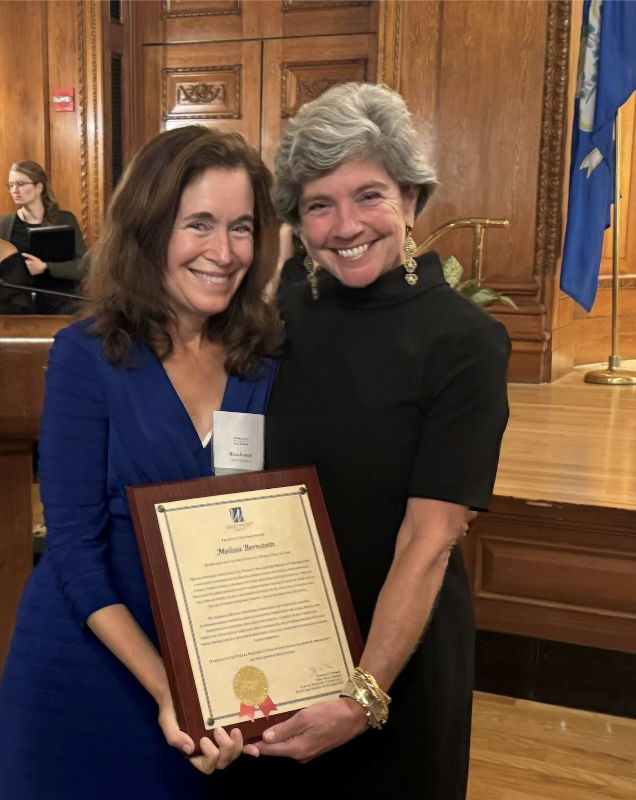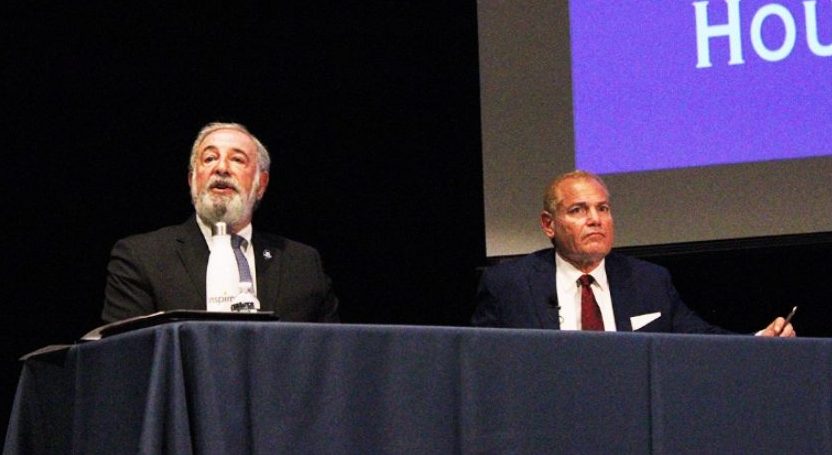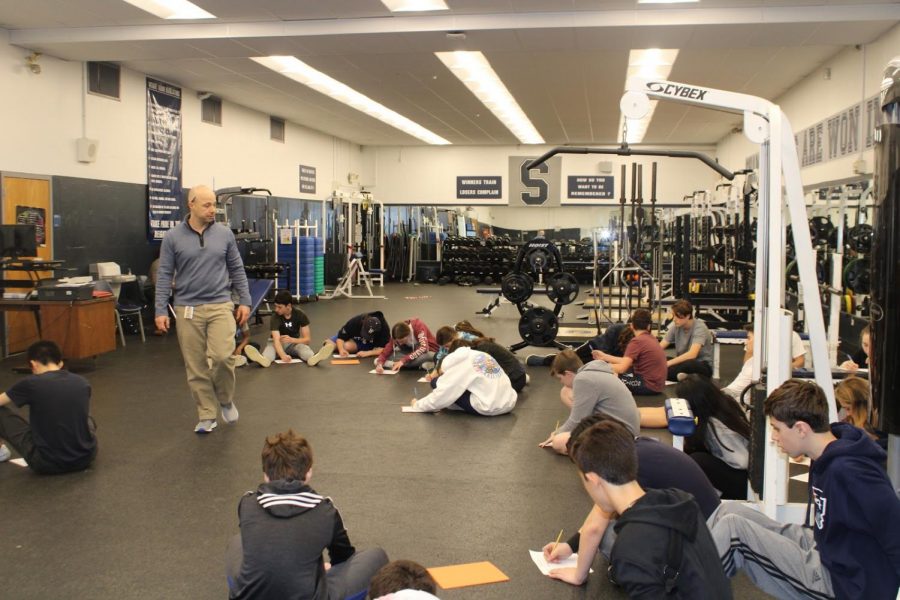Mindfulness curriculum garners positive response from students, teachers
P.E. class records their stress level in mindfulness activity tracker.
Close your eyes. Relax your muscles. Soften your mind. Focus on your breath, noticing how it enters and leaves your body. Envision yourself in a calm, peaceful, quiet place, such as a beach or the countryside, and allow any stress to melt from your body and soak into the ground beneath you.
This is just a single example of the kind of exercise one wouldn’t expect from a P.E. class, but the mindfulness program at Staples arms students with important life skills in stress management and creates a lull in the pressure of a typical school day.
“I think [mindfulness] is really important,” Lilly Girling ’21 said, “because it forces you to understand what relaxes your mind and body in the best and most personal way possible.”
P.E. administrators embedded mindfulness classes into the health and gym curriculums between 2014 and 2015. According to P.E. teacher CJ Shamas, the classes aimed to teach life skills that could be used as a physical and psychological supplement to students’ lives.
“We had great depth and breath within [exercising] the body,” Shamas said, “but our blindspot was exercising the mind.”
The supplemented curriculum guides students through various exercises, such as the savasana pose or conscious breathing. The use of these mindfulness techniques has been shown to help mitigate a range of problems, including depression and anxiety. However, the majority of people who practice mindfulness do so in order to help themselves hone their personal control and achieve a greater sense of inner peace.
“Say you’re at home and you’re in an argument with your mom,” health and P.E. teacher Jennifer Mitteness said, “and instead of yelling at her […] you take a minute to be mindful, take a deep breath, think about what you’re going to say and then respond to it.”
However, certain students were more skeptical of the program’s impact, including Caroline Motyl ’23. Motyl asserted that she often has two to three hours of homework each day, and would much rather use that time to be productive instead of pausing her work to meditate.
The notorious pressure that schools put on students in both academics and extracurriculars causes students to exhibit higher stress levels, often with no outlet to relieve it.

Sameera Kahn ’23 relaxes into guided meditation.
A study conducted by Harvard University, MIT and Transforming Education found that students who participated in an eight-week mindfulness course showed an increase of focus in the moment, thus enhancing their ability to regulate their emotions and perform in an academic environment. In addition to this, many students have found mindfulness to be a welcome change of pace in their school day.
“I think mindfulness is beneficial for students because not everyone can find the time during the school day to release stress,” Matthew Gatto ’23 said, “so when mindfulness is required it will force students to take time out of their day to feel rejuvenated.”
In support of Gatto’s statement, P.E. teacher Maureen Cadden explained that mindfulness is an integral part to anybody’s lifestyle, emphasizing that students should have periods of respite throughout the day from the constant stress of school. Many students, including Girling, use mindfulness techniques to fall asleep, or before important exams to calm their nerves.
“When we’re teaching students life skills, this is what really matters,” Shamas said. “It is the skills and the knowledge that are transferable in other aspects of their life and throughout people’s lives.”

Creative Director, Maya Hruskar ’23, has had a passion for journalism since her freshman year. Not liking her traditional English class very much, Hruskar...















































![[Nov. 2016 News] Wellness class promotes mindfulness in action and thought](https://www.inklingsnews.com/wp-content/uploads/2016/11/wellness-seminar.jpg)




